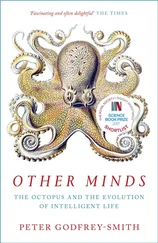This distinction between groups and societies (with the former defined as an aggregate whose members have more relationships with outsiders than with one another) means that a society is a comprehensible unit, while a group is not a comprehensible unit. A group can be known but it cannot be comprehended, because comprehension involves knowledge of a major part of the relationships existing in an aggregate. Such knowledge is not possible within a group because many of the relationships of the members of a group go outside the group to members of the larger unit, the society, of which the group is a part.
If a man from Mars, who knew nothing of our customs but who could, in some mysterious fashion, communicate with us, were suddenly to appear in the midst of a social group, among a football squad at practice or in the middle of a church service, or in a classroom during a lecture, he would find it utterly impossible to comprehend what was going on from explanations, no matter how detailed, of the interrelationships of the members of that group. His most obvious questions—"What are these persons doing?" "Why do they do it?" "What do they eat?" "Where does their clothing come from?" "What happens when one of them dies?"—or any others of an endless variety of questions could not be answered except by reference to persons, objects, ideas, or customs outside the group itself. Indeed, it is a safe rule that no significant questions about anything inside a group can be answered except by reference to things outside the group.
On the other hand, when a stranger suddenly arrives in a different society, as R. F. Fortune arrived among the Dobu, B. Malinowski among the Trobriand Islanders, Captain Cook among the Polynesians, Pizarro among the Incas, or Marco Polo among the Chinese, it is possible to obtain explanations and understanding of what is going on if there are communication and sufficient time. Thus, such a society is a comprehensible aggregate, while no social group is comprehensible, using that adjective in its real meaning as referring to something that can be "grasped together."
Since a society is comprehensible, while a group is not, most political units (being groups) are not comprehensible units. Political units are comprehensible only when a single political unit covers the whole of a society. This is frequently not the case, although it is usually true of the more primitive societies organized in tribes. The Zuni, for example, like many of the other Indian tribes, were both a political unit and a society. Japan and China were, about 1850, comprehensible political units because they were separate societies. In most advanced societies it will be found that the religious, intellectual, social, economic, and even military patterns are roughly coterminous with each other and with the outline of the society as a whole. But in such a society the political units usually cut across these other patterns. We can know a great deal about such political units, but we cannot understand them because understanding requires knowledge of a major portion of the patterns of relationships in society as a whole.
As we examine numerous societies like that of the Eskimos, the Zuni Indians, the Chinese, the Hottentots, or our own Western civilization, we see that there are two different kinds of such societies: (a) parasitic societies and (b) producing societies. The former are those which live from hunting, fishing, or merely gleaning. By their economic activities they do not increase, but rather decrease, the amount of wealth in the world. The second kind of societies, producing societies, live by agricultural and pastoral activities. By these activities they seek to increase the amount of wealth in the world. As we shall see later, the distinction between these two kinds of societies is of most fundamental importance. Man was a parasite from his first appearance on the earth, perhaps as long as a million years ago. Only with the discovery of the techniques of agriculture and domestication less than ten thousand years ago did it become possible for man to be a producer, and, even during the last ten thousand years, there have been more parasitic societies (like the Sioux or the Eskimos) than there have been producing societies (like the Zuni or the Chinese).
If we concentrate our attention on the producing societies that have existed during the last ten thousand years, we see again that there are at least two distinct kinds. There are simple producing societies like the Zuhi (with agriculture), or the Masai (with pastoral herds), and there are much more complex societies that we call "civilizations" (like the Chinese, the Aztecs, or ourselves). The distinction between a civilization and an ordinary producing society is not easy to draw, and it is too early in our discussion to seek to draw it at this time. However, it is clear that most of the civilizations with which we are familiar have had both writing and city life. Accordingly, as a temporary definition, we might say that a civilization is a producing society that has writing and city life.
We might sum up our definitions to this point by saying that aggregates of persons may be divided into (a) collections, (b) groups, or (c) societies. The members of a collection, coming casually together in time and place, have no established relationships. The members of a group do have relationships sufficiently established to be able to identify who is or who is not a member of the group, but they have the major portion of their total relationships with persons who are not members of the group. A society, on the other hand, is made up of persons who have the major part of their relationships with one another. It may be either parasitic or producing, and if it is a producing society it may or may not be a civilization. These rather simple but very significant distinctions can be summed up in a table:
A ggregates of P ersons
A. Collections
B. Groups
C. Societies
1. Parasitic societies
2. Producing societies
a. Simple tribes or bands
b. Civilizations
When we examine these three kinds of societies (parasitic, producing, and civilizations), we see that there have been very many parasitic societies, a much smaller number of producing societies, and very few civilizations. As for the relative numbers of each, we might say that there have been hundreds of thousands of the first, at least thousands of the second, but not more than two dozen civilizations. Since our chief concern in this book is with our own society, which is a civilization, the rest of this book will be concerned with the nature of this particular kind of society only.
Of the two dozen civilizations, all of which existed during the last ten thousand years, seven have been alive in recent years, while the rest, amounting to approximately seventeen in number, lived and died long ago. All of them, both living and dead, can be divided into three groups depending upon the carbohydrate plant they produced as an energy food. There were three such foods: maize, rice, and grain (wheat and barley). In the maize group were two civilizations: (a) the Andean civilization, which began about 1500 B.C., culminated in the Inca Empire, and was destroyed by outside invaders about A.D. 1600; (b) the Mesoamerican civilization, which began about 1000 B.C., culminated in the Aztec Empire, and was destroyed by similar invaders about A.D. 1550. Both of these civilizations were derived from a common source, a producing society which was not a civilization, probably situated in some hilly area in the northern part of South America.
The "rice" group is somewhat misnamed since the chief carbohydrates which supported it in the earliest period and have continued to be used since were millet and wheat. This group has at least three (and perhaps as many as six) civilizations in it. Only an expert on the history of the Far East could speak with confidence on this subject. Since this is not one of our chief areas of interest, we shall oversimplify the situation by listing no more than three civilizations. Of these the earliest, Sinic civilization, rose in the valley of the Yellow River after 2000 B.C., culminated in the Chin and Han empires after 250 B.C., and was largely disrupted by Ural-Altaic invaders after A.D. 400. From the debris of this Sinic civilization there emerged two other civilizations: (a) Chinese civilization, which began about A.D. 400, culminated in the Manchu Empire after 1644, and was destroyed by European intruders in the period 1790-1930; and (b) Japanese civilization, which began about the time of Christ or a little earlier, culminated in the Tokugawa Empire after 1600, and may have been completely disrupted by Western intruders in the century following 1853.
Читать дальше










